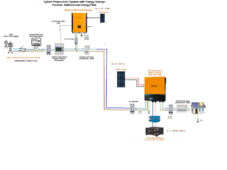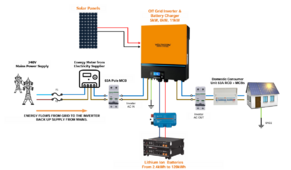I have 20 panels in an off grid setup ie acinput from the grid, ac output to the breaker unit/consumer unit which feeds the load as well as 8k of panels and 30kwh of batteries. Being in nothern europe sun is scarce from nov - feb but the spring/summer months I get more solar than I need so I was thinking of adding grid-tie into the mix as I have an extra 10 panels lying around which I havent hooked up to the off grid as yet and thought might be worth having these feed the grid and at least get something back from the utility. My vendor told me this would damage the inverters. The design I sent to them attached below. What I cannot understand is why it would damage the inverters?





